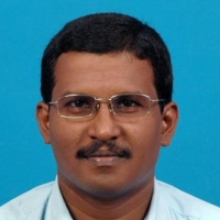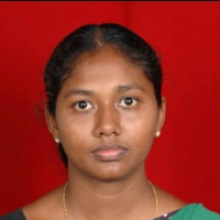International Journal of Computer Network and Information Security (IJCNIS)
IJCNIS Vol. 13, No. 1, 8 Feb. 2021
Cover page and Table of Contents: PDF (size: 231KB)
Impact of Equalizer Step Size in Underwater Acoustic Communication Channel
Full Text (PDF, 231KB), PP.29-38
Views: 0 Downloads: 0
Author(s)
Index Terms
Decision feedback Equalizer, Linear Equalizer, Bit Error Rate, Underwater Acoustic Channel, Cyclic Prefix
Abstract
The Underwater Acoustic Channel (UAC) is a time variant channel and its multipath effects create ISI. This is one of the most important obstacles in the UAC channel which reduces the transmission rate. To remove this obstacle, a proper filter has to be designed in the receiver section. In this article, optimal step size for equalizer is computed and compared the results with the known techniques namely Decision Feedback Equalizer with interleave division multiple access (DFE IDMA) and Cyclic Prefix - Orthogonal Frequency Division Multiplexing (CP-OFDM) Equalizer. Channels are modeled using ray tracing methods. The various factors considered are ambient noise, attenuation loss, bottom and surface loss. The overall path loss for channels is computed by summing up the attenuation loss, surface and bottom loss. Simulation results evident that for short range UAC channel, the BER in the order of 10-2 is achieved using proposed methodology with least Eb/No compared to standard DFE method.
Cite This Paper
Krishnamoorthy Raghavan Narasu, Immanuel Rajkumar, Jerry Alexander, Marshiana Devaerakkam, "Impact of Equalizer Step Size in Underwater Acoustic Communication Channel", International Journal of Computer Network and Information Security(IJCNIS), Vol.13, No.1, pp.29-38, 2021. DOI: 10.5815/ijcnis.2021.01.03
Reference
[1] Kai Tu, Dario Fertonani, Tolga M. Duman, Milica Stojanovic, John G. Proakis and Paul Hursky, Mitigation of Inter-Carrier Interference for OFDM over time-varying underwater acoustic channels, IEEE Journal of Oceanic Engineering, 2011, 36(2), p.156-171.
[2] Qin Lu, Yi Huang, Zhaohui Wang and Shengli Zhou, Characterization and receiver design for underwater acoustic channels with large doppler spread, OCEANS - MTS/IEEE Washington on oct. 2015, p.1-6.
[3] Jun Ling and Jian Li, Gibbs-sampler-based semiblind equalizer in underwater acoustic communications”, IEEE Journal of Oceanic Engineering, 2012, 37(1), p.1-13.
[4] Jianzhong Huang, Shengli Zhou and Zhaohui Wang, Performance results of two iterative receivers for distributed MIMO OFDM with large doppler deviations, IEEE Journal of Oceanic Engineering, 2013, 38(2), p.347-357.
[5] Aliesawi S, Tsimenidis C.C, Sharif B.S and Johnston M, Performance comparison of IDMA receivers for underwater acoustic channels”, 7th International Symposium on Wireless Communication Systems on Nov. 2010, p. 596-600.
[6] N. R. Krishnamoorthy; C. D. Suriyakala: “ Performance of Underwater Acoustic Channel using modified TCM OFDM coding techniques”, Indian Journal of Geo Marine Sciences, Volume: 46, Issue: 3, 2017, pages: 629 - 637.
[7] Mandar Chitre, Konstantinos Pelekanakis and Matthew Legg, Statistical bit error trace modeling of acoustic communication links using decision feedback equalization, IEEE Journal of Oceanic Engineering, 2013, 38(4), p.785-795.
[8] Samar Kaddouri, Pierre-Philippe J. Beaujean, Pierre-Jean Bouvet and Gaultier Real, Least square and trended Doppler estimation in fading channel for high-frequency underwater acoustic communications, IEEE Journal of Oceanic Engineering, 2014, 39(1), p.179-188.
[9] Chengbing He, Siyu Huo, Qunfei Zhang, Han Wang and Jianguo Huang, Multi-channel iterative FDE for single carrier block transmission over underwater acoustic channels, China Communications, 2015, 12(8), p.55-61.
[10] Jun Tao, Yahong Rosa Zheng, Chengshan Xiao and T. C. Yang, Robust MIMO underwater acoustic communications using turbo block decision-feedback equalization, IEEE Journal of Oceanic Engineering, 2010, 35(4), p.948-960.
[11] Xiaohui Zhong, Fangjiong Cheny, Fei Ji and Hua Yu, Variable step size least symbol error rate adaptive decision feedback turbo equalization for underwater channel, OCEANS-MTS/IEEE Washington on oct. 2016, p.1-4.
[12] Jamaah Suud, Hushairi Zen, Al-Khalid B Hj Othman, Khairuddin Ab. Hamid, Decoding of Decode and Forward (DF) Relay Protocol using Min-Sum Based Low Density Parity Check (LDPC) System, International Journal of Communication Networks and Information Security, Vol. 10, No. 1, pp. 199-212, April 2018
[13] Nada M. Khalil Al-Ani, Oras A. Shareef Al-Ani, Mahmood F. Mosleh, Read A. AbdAlhameed, "A Design of MIMO System Based on YShaped with QSCS for UWB Applications", International Journal of Information Technology and Computer Science, Vol.12, No.1, pp.17-23, 2020.
[14] Yanbo Wu, Min Zhu and Xinguo Lit, Sparse linear equalizers for turbo equalizations in underwater acoustic communication, OCEANS - MTS/IEEE Washington on oct. 2015, p.1-6.
[15] Weimin Duan and Yahong Rosa Zheng, Soft direct-adaptive turbo equalization for MIMO underwater acoustic communications, OCEANS - MTS/IEEE Washington on oct. 2015, p.1-6.
[16] Dipak S. Marathe, Uday P. Khot, " A 1-V 10-bit 16.83-fJ/Conversion-step Mixed Current Mode SAR ADC for WSN", International Journal of Image, Graphics and Signal Processing, Vol.11, No.11, pp. 43-50, 2019.
[17] Amirhossein Rafati, Huang Lou and Chengshan Xiao, Soft-decision feedback turbo equalization for LDPC-coded MIMO underwater acoustic communications, IEEE Journal of Oceanic Engineering, 2014, 39(1), p.90-99.
[18] Srinivas Yerramalli and Urbashi Mitra, Optimal resampling of OFDM signals for multiscale multilag underwater acoustic channels, IEEE Journal of Oceanic Engineering, 2011, 36(1), p.126-138.
[19] Jun Ling, Xing Tan, Tarik Yardibi, Jian Li, Magnus Lundberg Nordenvaad, Hao He and Kexin Zhao, On bayesian channel estimation and FFT-based symbol detection in MIMO underwater acoustic communications, IEEE Journal of Oceanic Engineering, 2014, 39(1), p.59-73.
[20] Shahzad Ashraf, Sehrish Saleem, Tauqeer Ahmed, " Sagacious Communication Link Selection Mechanism for Underwater Wireless Sensors Network ", International Journal of Wireless and Microwave Technologies, Vol.10, No.4, pp. 22-33, 2020
[21] N. R. Krishnamoorthy; C. D. Suriyakala: “Comparative study of error control coding in underwater acoustic channel”, Third International Conference on Advances in Recent Technologies in Communication & Computing (ARTCom 2011), Sep 14 – 15, 2011, pages: 227 - 230.



